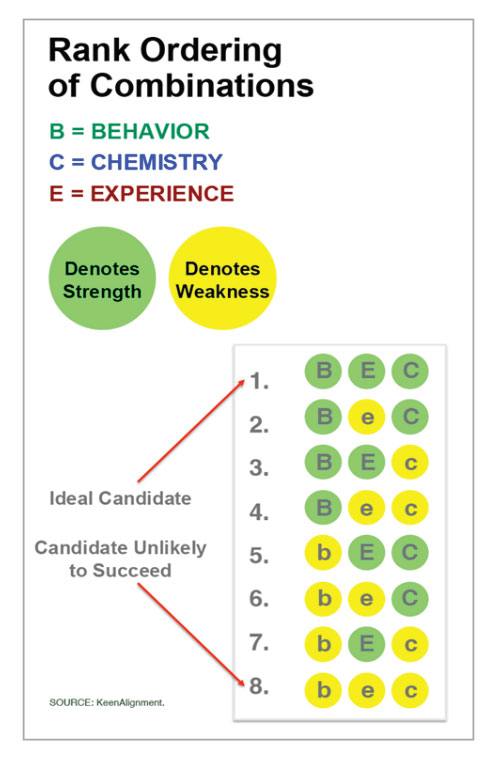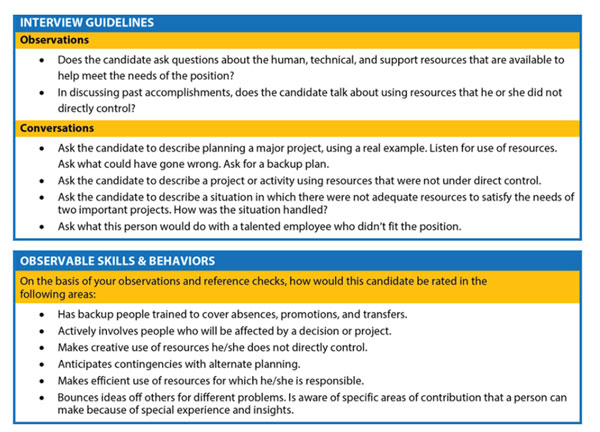6/30/2025
Expand Your Candidate Pool
Todd Downing
Is there a more inexact science than hiring people who excel and stay with a company for at least seven years? Many a grower has claimed better success rates in growing healthy plants than hiring and their shrink numbers substantiate this! Some of the metrics are staggering. Per Gallup, one-third of all new hires will quit their jobs in the first six months and know within one week if they’re going to stay. According to the latest Gallup data, employee engagement in the U.S. fell to its lowest level in a decade in 2024, with only 31% of employees engaged. This matches the figure last seen in 2014. The percentage of actively disengaged employees, at 17%, also reflects 2014 levels.
Specific to the horticulture industry in Dr. Charlie Hall’s current Index of Prices Paid By Growers Report, the individual component of the index that experienced the largest cost increases since 2007 is labor, at 95% more expensive than in 2007. Per Dr. Hall’s research, labor has been a two-fold dilemma for growers, with both the cost and availability of labor being a severe limitation for nursery and greenhouse growers alike. Search and acquisition costs for labor have also increased on top of the increased wages and associated labor burden. The labor cost and dilemma are not immune to just growers in our industry—it’s also a significant challenge for all suppliers.
Our industry is one of the most affected by the massive exit of so many retiring Baby Boomers who make up the green industry. Couple this with lower numbers of incoming talent and the demand for talent continues to far exceed the supply of candidates.
While there are currently no magic answers, there are innovative and different ways of looking at the hiring process that will improve a company’s ability to attract and retain employees.
The obstacle
Much of the issue is based on how one defines the talent pool. Hiring managers tend to select candidates only if they have the exact pedigree, experience and knowledge required for the position. Usually, this means they want a sales candidate’s “book of business” to come with them (which, by the way, salespeople with that book of business make up the vast majority of those retiring!). For technical grower-related roles, they want candidates to make a parallel shift into the same role they’re leaving so that the new hire is “turnkey” with extremely low training needed. However, this isn’t the 1980s. Candidates today are more career savvy, and they have choices both in and outside our industry.
To add another layer of complexity, many business leaders are stuck in two camps: clone the current aging employee population or hire the younger generation. In cloning the current aging employee population, hiring managers want someone who’s done it before in their industry and, if possible, for their clients or clients’ competitors. This first camp leads to low or no innovation, a decreasing talent pool and the challenge of pulling from a competitor, which is the only place to find those who’ve done the exact same role you’re trying to fill.
Hiring the younger generation appears to be a terrific alternative! Get them in early in their career and they’ll stay forever, just like the Baby Boomer generation or Gen Xers, right? Unfortunately, it doesn’t work that way! Specifically targeting younger candidates over older candidates equally able to perform the same job at the same rate of pay is a violation of the Age Discrimination in Employment Act (ADEA). Younger generations put more emphasis on roles and companies that align with their values. They care deeply about investing in their overall professional and personal development rather than titles or other success factors of older generations. So how do we improve our hiring success?
It’s about behaviors!
In the context of a job, people must possess a particular set of competencies to be a good “fit” and achieve success. The three critical dimensions of job-related competencies are:
- Behavior traits that are required to accomplish the job
- Experience or job-related education and training that contribute to greater productivity
- Chemistry or the personality that’s compatible with the company and work group
We need to change our hiring thinking by realizing the importance and specific identification of the behavior traits required in a role. This will open a wider, more qualified talent pool.
Experience, or hiring the exact same position from your competitor, is too often viewed as the most important dimension. However, it’s actually the LEAST critical to success. Outside of highly technical roles, we can hire a lower level of specific experience because technical, product and industry knowledge can be trained.
If a professional has the right behaviors and experience, but the chemistry is lacking, a person may still be successful if the company and person recognize and choose to work through their differences. The same is true for professionals with the right behaviors but little experience and poor chemistry.
 The common hiring success denominator is behaviors—not experience or chemistry. We would all love to hire the ideal candidate with adequate levels of behaviors, experience and chemistry. Unfortunately, this is akin to looking for a purple squirrel—good luck finding that in today’s dynamic hiring market.
The common hiring success denominator is behaviors—not experience or chemistry. We would all love to hire the ideal candidate with adequate levels of behaviors, experience and chemistry. Unfortunately, this is akin to looking for a purple squirrel—good luck finding that in today’s dynamic hiring market.
How do we identify these behaviors?
The behavioral-based hiring process, when applied properly, has shown to increase hiring success rates up to 80% to 90%. Many Fortune 500 companies have already adopted using Behavioral Based interviewing in their hiring process. Focusing on behaviors widens the talent pool dramatically, potentially shortening the recruitment period and onboarding process. It often extends the new employee’s initial learning curve as a company trains the new hire on specific industry or role details. So how does this work?
Twenty-five specific professional behaviors make up behavior trait families. We define these four families as:
■ Motivations: The fundamental drive of an individual is characterized by more than the simple desire to earn money. What provides the individual the personal fulfillment in their work? The six specific motivational behaviors are: Contender - Go-Getter - Responsible - Results-Driven Service Centralizer - Excellence Focused
■ Modes of Acting: Functional behavioral traits that address the individual’s approach and skills for accomplishing work functions. These include organizational and time management skills, planning and prioritization, initiative, work focus, and physical and mental stamina. Eight behaviors part of Modes of Acting are: Coach - Investigator - Miner - Passionate - Planner Solution-Oriented - Tactician - Visionary
■ Modes of Interacting: Addresses an individual’s interpersonal skills in how they influence, interact and have a good relationship with others. The seven behaviors of the Modes of Interacting Trait are: Connector - Convincer - Diplomat - Inspirer - Orator - Supporter - Moxie
■ Modes of Thinking: An individual’s capacity to gather information and process it. These traits look at an individual’s ethical principles, creativity, flexibility and adaptability. Four behaviors defining the Modes of Thinking Trait are: Analyst - Astute - Integrity - Trendsetter
When determining the need for a new position, or to backfill an existing role, collaborate with HR, the hiring manager and those impacted by the role (internal/external clients, peers and direct reports if any). Identify the behavior traits, competencies and personality desired in the ideal candidate. Within each behavior trait family there are differing combinations of behaviors and competencies important to each role. It’s easy to state, “Well, ALL are important to one degree or another.” Take time to accurately identify and rank in order of importance the top eight behaviors necessary for success in a position and fit to the company culture. Once identified, you’ll be able to develop specific questions and observations to assess how closely candidates embody these traits.
For example, let’s focus on the questions and observations when assessing the TACTICIAN behavior, one of the most common behaviors companies identify as a #1 behavior for a Head Grower Position.
Tactician (Management Trait): There’s a realistic awareness of the entire human, technical and support resources at hand. When a project or campaign presents itself, systems are already in place to bring the best resources to bear upon the objective. Scenario building and development of alternative (contingency) plans are the natural way of operating for the skillful Tactician. This manager will rarely be caught short by the unexpected. This candidate will effectively delegate resources and prepare for “Plan B,” focus on efficiency and streamlining, and be a long-range planner seldom caught off guard by the unexpected.
 Candidates with a diverse experience set—without the exact pedigree, experience and knowledge of previous incumbents, but who demonstrate the desired combination of behavior traits and competencies—bring innovation and creativity to your business. It’s the difference between looking for reasons TO hire someone rather than NOT TO hire them. By assessing and hiring talent based on “Best Behaviors,” you’ll find more candidates in your candidate pool who can excel in the role, and you may just find the business growth and employee retention you have been looking for. GT
Candidates with a diverse experience set—without the exact pedigree, experience and knowledge of previous incumbents, but who demonstrate the desired combination of behavior traits and competencies—bring innovation and creativity to your business. It’s the difference between looking for reasons TO hire someone rather than NOT TO hire them. By assessing and hiring talent based on “Best Behaviors,” you’ll find more candidates in your candidate pool who can excel in the role, and you may just find the business growth and employee retention you have been looking for. GT
Todd Downing (tdowning@bhcagroup.com) is a Managing Partner for BEST Human Capital Advisory Group and leads the Horticulture & Green Industry executive search and advisory services. He has more than 30 years of experience in the industry and a passion for supporting its continued professional growth.